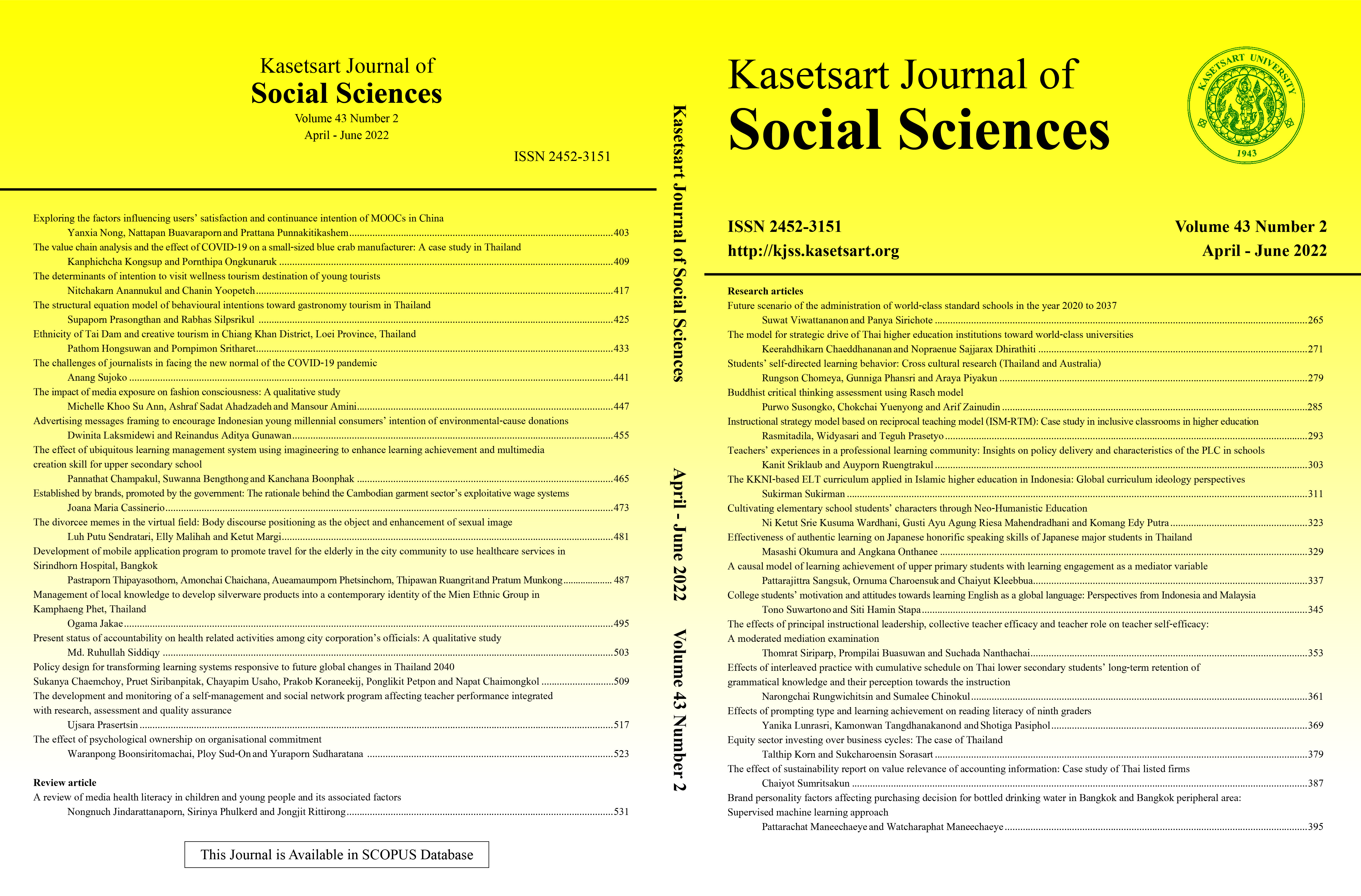The model for strategic drive of Thai higher education institutions toward world-class universities
Keywords:
administrative model, strategic drive, Thai higher education institutions, Thai university, world-class universitiesAbstract
The objective of this research was to propose a model to drive Thai higher education to a world-class level. The purposive sampling technique was applied to obtain 116 key informants from eight universities located in Bangkok and its vicinity for an in-depth interview. Based on five strategies conceptual framework by Fred R. David and the findings from an in-depth interview, the Delphi technique was carried out with a panel of 17 experts to discover an appropriated model to drive Thai universities to be world-class universities. The results revealed that the model consisted of five fundamental guidelines. Firstly, the guideline for the University administrator recruitment, succession strategy and action plans are suggested to include a board with world-class university specialists and the university executive board should have a global vision, high integrity, administrative competencies, world-class-university-oriented goals, and global academic leadership. In addition, their operation plans should satisfy valuable changes. Secondly, the resource allocation guideline is to create high-quality of interdisciplinary research, innovations for global benefits, communication systems, networks, new business models, and resource management. Thirdly, the work system determination guideline recommended creating the student potential development system, innovative research process, social benefits, administrative technological systems, communication and knowledge management, and high-quality human resource. Fourthly, the organizational structure design guideline pursued to indue the efficiency, flexibility, and streamline systems that can collaborate all relating sectors. Lastly, the organizational culture development guideline suggested to promote integrity, international mindset, work with diversity, with a focus on excellence and social benefits.
Downloads
Published
How to Cite
Issue
Section
License

This work is licensed under a Creative Commons Attribution-NonCommercial-NoDerivatives 4.0 International License.
This is an open access article under the CC BY-NC-ND license http://creativecommons.org/licenses/by-nc-nd/4.0/










